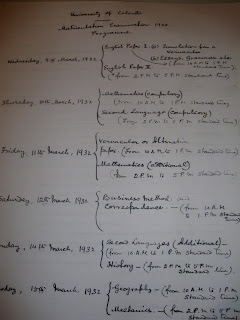The letter pasted here is the response made by the University of Calcutta to Sikkim Durbar regarding the selection of English teachers at Sir Tashi Namgyal High School Gangtok. As per the Orders made by this letter, an appointment of Mr. C.E. Dudley and Rashmi Prasad Alley was to be made as the English Teachers at the said School. It is appealing to know that, possibly due to the lack of Education Department in Sikkim, the conscription procedure was done according to the parameters framed by the British Indian Government. The letter further says-“Teachers who possess qualifications as laid down in section 9(B), read with section 9(D) of Chapter XXI of the Regulations are qualified to teach English in recognized High Schools”. This correspondence was sent to the Judicial Secretary to His Highness the Maharaja of Sikkim (Mr. R.B. Rai) from The Registrar Calcutta University (J. Chakravorti). The dispatch also underscores the fact that, the administration of Calcutta University was then also watch over by the Senate House. The Letter was sent to the Sikkim Durbar on 30th of May 1941 from the Senate House Calcutta.
History of Rongli Bazaar
1 week ago


















































